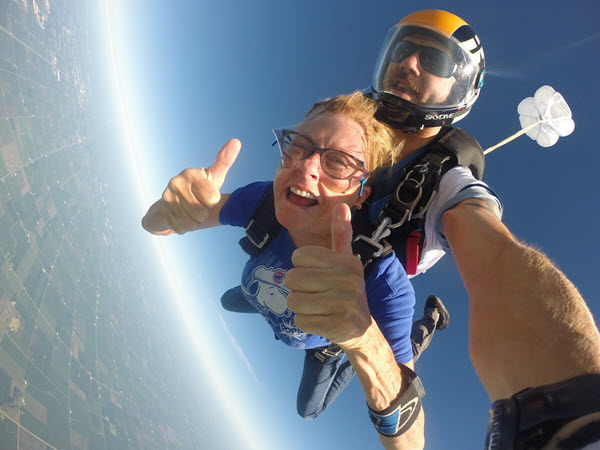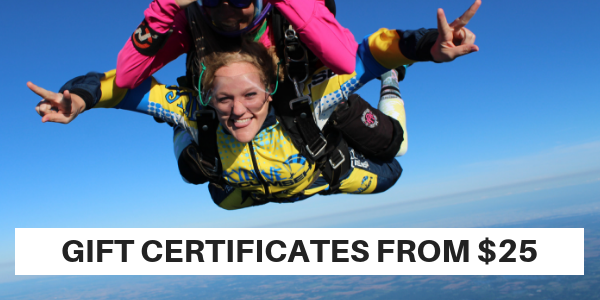- Michigan's Premier Skydiving Center
- Call Now: (517) 423-7720
Skydiving with Glasses or Contacts
Wednesday, August 21, 2019
- Skydive Tecumseh
- 8/21/19
- 0
- General
Are you curious about how to skydive with glasses or contacts? Here’s a better question for you: Do you want to see the splendiferous world around you clearly when you step out of an airplane for the very first time? The answer to both excellent questions is YES! If you require glasses or contacts for a crystal-clear view in freefall, you’re in luck: We provide you with goggles that protect you, even when 120mph winds are factored into the equation! Here’s everything you need to know about skydiving when you wear glasses or contact lenses.

How Skydiving With Glasses Works
Glasses-wearing skydivers definitely skydive wearing them — not just first-time tandem skydiving folks, but very experienced skydivers as well. Jumping with non-optimal vision isn’t all that safe and it isn’t all that awesome, so we offer be-spectacled jumpers of all ilk a set of skydiving goggles to pop over their prescription pair. They’re big enough to go over all but the most ginormous pairs of glasses, so you’ll enjoy your full corrected vision to take in the sights as you zoom back to Earth.
How Skydiving With Contacts Works
If you wear contacts, you certainly know how easy it is to knock one out of place. Unprotected in the face of freefall conditions, those delicate little suckers are not long for this world. Luckily, the same trick that works for glasses works for contacts: We’ll give you goggles to protect both your eyes and your lenses. With contact lens wearers, we often add a little extra security by covering up the goggles’ ventilation holes. You’ll be just as comfortable, but your lenses will be extra unlikely to make a break for it.

Why Vision is Important in Skydiving
The skydiving views are well worth having your vision intact, but we’re talking about more than just the lovely sightseeing. There are practical reasons you need good vision when skydiving, too. As a tandem skydiver, your responsibilities are pretty limited — but as a solo skydiver, you’ll need your sight to take full and useful responsibility for the activation of your equipment, accurately fly your parachute to the landing area and determine your height over the ground, not to mention digging into the 3D depth perception group freefall requires. Being able to see what’s going on is an important part of your safety and enjoyment of the sport.
How to Protect Your Eyes When Skydiving
Even if you don’t wear glasses or contacts, you’ll be wearing goggles as eye protection on your jump. Why? For the same reason that motorcyclists always protect the eyes — wind in one’s face is one thing, but the wind against one’s eyeballs is something else entirely. Everything from tiny particles in the air to actual-factual bugs might blast against your delicate eyeballs without them — and it’d be impossible to keep your eyes open against the pressure of the 120mph wind, besides. Trust us: skydiving Goggles are the way to go.
If you’d like to skydive and you’re visually impaired, get in touch. We’ll be happy to help with any questions you have.
Copyright © 2025, Skydive Tecumseh, All Rights Reserved.
DropZone Web Design & Marketing by Beyond Marketing, LLC
